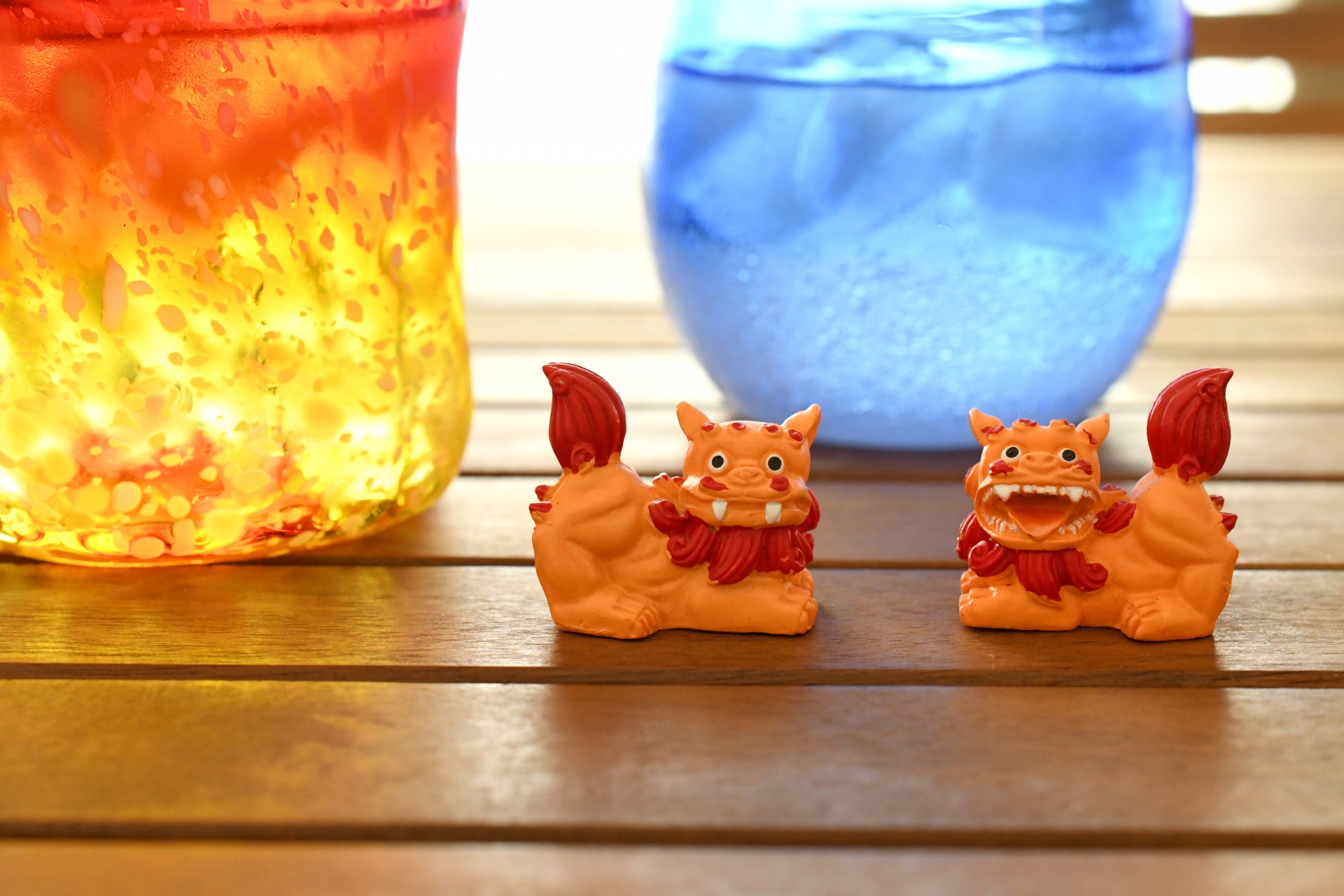Have you ever come across Ryukyu Glass in an Okinawan souvenir shop?
With its wide variety of items—from glasses and vases to plates, bowls, and accessories—and often affordable prices, it’s a popular craft for souvenirs. But if you’re curious about Ryukyu Glass, you might be wondering, “How is it different from ordinary glasswork?”
Born from the Post-War Occupation (America-yuu) and the Tourism Boom After Reversion
In a word, Ryukyu Glass is the blown glass sold in Okinawa.
Blown glass is a type of glasswork created by wrapping molten glass around the tip of a hollow blowpipe and inflating it by blowing air into the inside. Ryukyu Glass is mainly divided into two types: free-blown glass and mold-blown glass.
- Free-blown glass: Also called chu-fuki glass. It is shaped by blowing into the pipe in mid-air.
- Mold-blown glass: Shaped by inserting the glass on the blowpipe into a mold and blowing into it.
The history of Japanese glasswork is said to be ancient, beginning in the Yayoi period. (Note: The oldest glass in Japan was excavated from the Kamegaoka Site (Aomori Prefecture) from the late Jomon period.) Although the history of this glasswork was once interrupted during the Heian period, glass products that arrived with Christianity in the 16th century became popular again, and by the 17th century, artisans began to take up glass manufacturing.
In contrast, the history of Ryukyu Glass is surprisingly recent. It’s said that glass manufacturing techniques were introduced around the mid-Meiji period, and it evolved into its current form through the post-war occupation and the tourism boom after the reversion to Japan.
Ryukyu Glass, Primarily Made from Crushed and Re-melted Bottles
One of the characteristics of Ryukyu Glass is its vividness and bubbles. This is influenced by its history.
While glass manufacturing itself existed in Okinawa before the war, its current form is a post-war story. Okinawa, which suffered extensive damage in the Pacific War, was occupied by the U.S. military. At this time, discarded Coca-Cola bottles from the U.S. military were reused for glass manufacturing.
Subsequently, from the mid-1950s, colored Ryukyu Glass products began to be manufactured using Coca-Cola bottles (pale blue), Seven-Up bottles (green), and beer bottles (brown). However, at that time, they simply used the colors of the bottles as they were, and any coloring was very basic. It would take a little more time before various colors like red and yellow began to be used as they are today.
Ryukyu Glass Undergoes a Transformation After Okinawa’s “Reversion to Mainland Japan”
The background for Ryukyu Glass’s current use of diverse colors was the event of Okinawa’s reversion to mainland Japan.
For some time after the war, Okinawa was under the occupation of the U.S. military, but on May 15, 1972, Okinawa was returned to Japan. With Okinawa’s reversion, it became possible to purchase dyes and glass materials from the mainland, which led to the creation of Ryukyu Glass with a wide variety of colors, as we see today.
Additionally, Okinawa’s reversion led to an increase in tourists visiting from the mainland. To meet the needs of these tourists, the designs of the glass also began to change.
When you hear “Okinawa,” what comes to mind? Blue seas, blue skies, beautiful sunsets, hibiscus flowers…
While there are many possible answers, Ryukyu Glass was also shaped to match the image of Okinawa that these tourists had. For example, the vibrant blue Ryukyu Glass can be said to have established its firm place thanks to tourists who associated Okinawa with “blue seas” and “blue skies.”


